
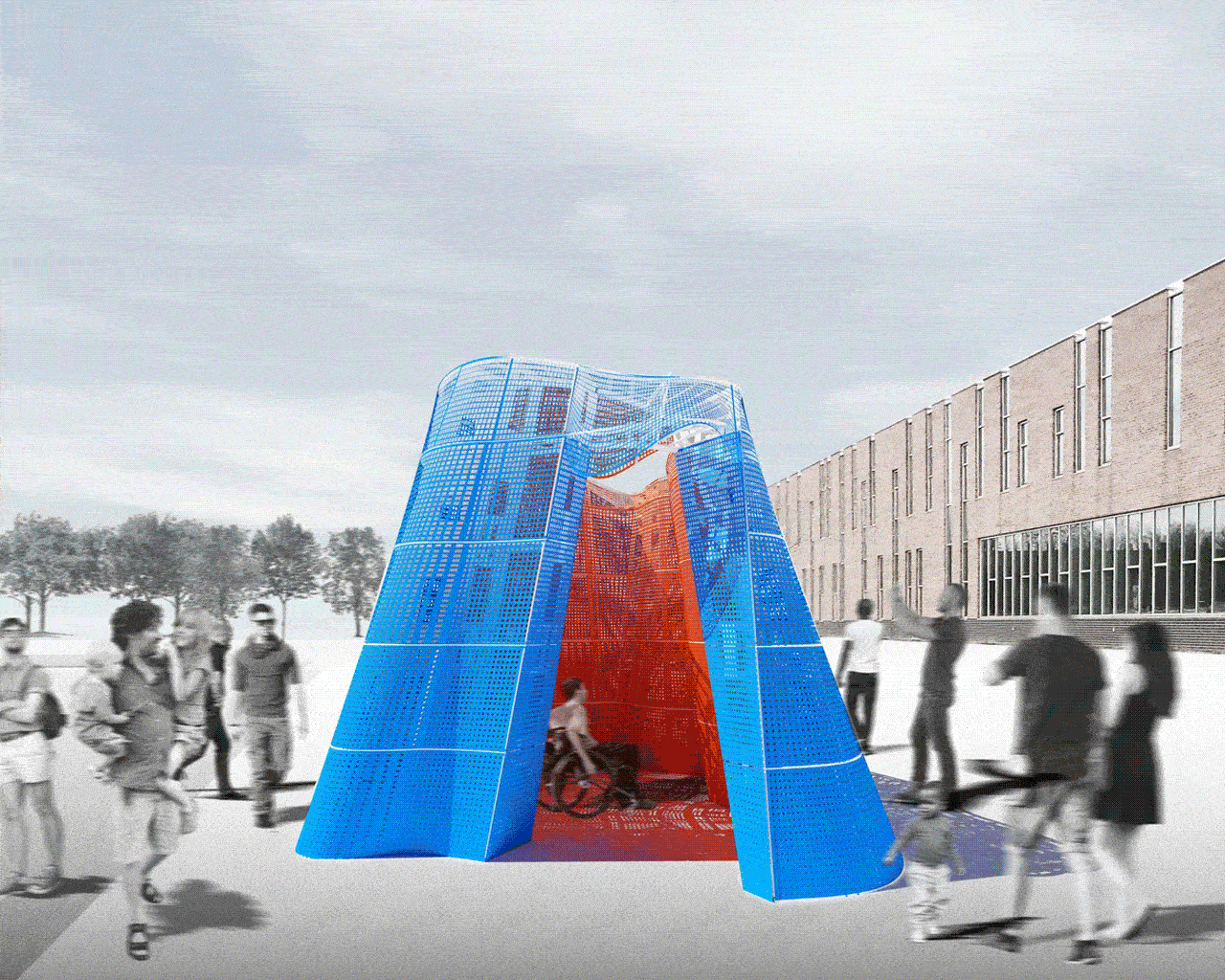
On August 26, the inaugural exhibition of Exhibit Columbus, an annual exploration of architecture, art, design, and community, will open to the public. The exhibition will include six built structures, designed by teams from six different Midwestern universities, that investigate the built environment of Columbus and involved working closely with members of the community.
Central to the project is the belief that applied research serves as a “hinge” between the academic and the professional. Each prototype structure was co-produced by students and faculty, and involved working with local fabricators in order to test new methods for producing architecture. The ambitions for it are large: to not only serve as a valuable educational experience, but also to “change the way we design and build in the Midwest.”
“A design-build project asks the students to take a position on their education and represent it through collaboration, research, proposal, and application—all in the form of a prototype,” write Joshua Coggeshall and Janice Shimizu, the university coordinators behind the project. “It inspires innovation and provides rich opportunities for a dialogue between critical thinking and learning through making.”
Below we take a look at each of the projects for Exhibit Columbus.
Listen to our conversation with Joshua Coggeshall and Janice Shimizu from the Ball State University team, and Martin Summers from the University of Kentucky...
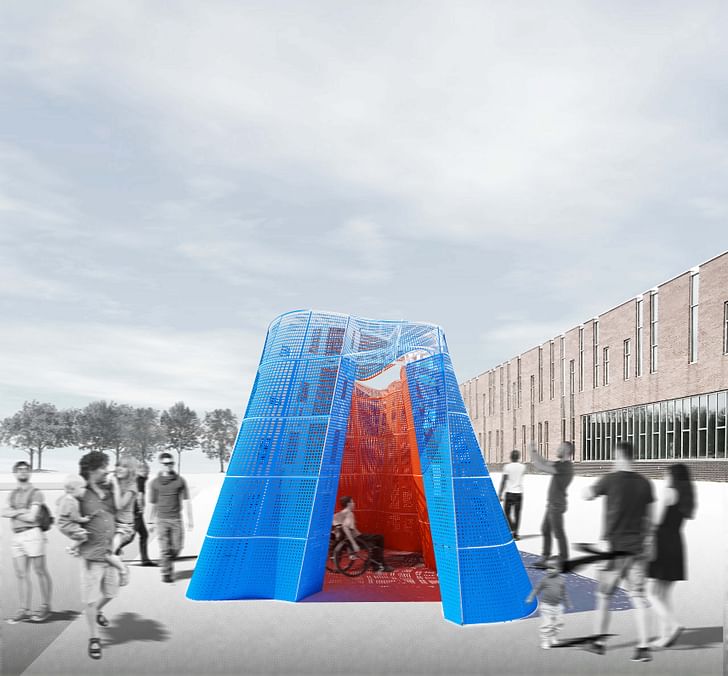
49262 by Ball State University, College of Architecture and Planning
Ball State University’s project, 49262, was led by Coggeshall, who also served as the University coordinator for the entire initiative. It involves a laser cut perforated sheet metal overlaid on a CNC milled plywood frame. Intended to mirror, while not “replicating”, the verticality of Columbus’ skyline, the installation features perforations that grow in size and density as the height increases until it “blurs and then fades into the sky, creating a gradient between material and space.”
“This project is a spatial and tectonic ode to the legacy of Columbus,” the team states.
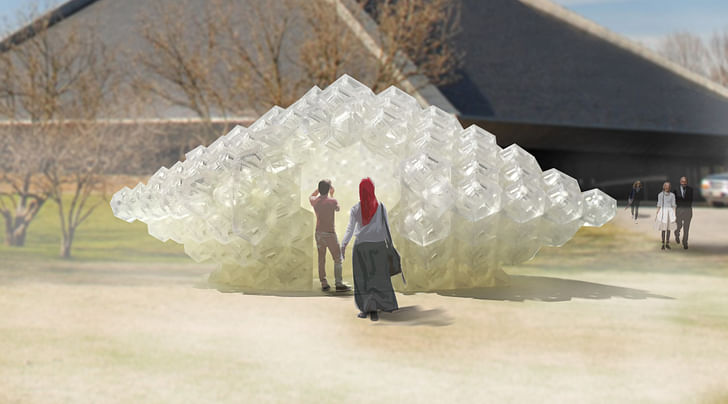
Synergia by Indiana University, School of Art & Design
Led by Jiangmei Wu and Andres Tovar, Indiana University’s project, Synergia, employs a laser cutter to cut hendecahedrons from corrugated plastic. The installation is placed next to North Christian Church and aims to create “a place that fosters peace and reflection.”
“Synergia embodies the reality of life, community, and harmony through simple parts working together to create a complex and light-filled space,” writes the team.
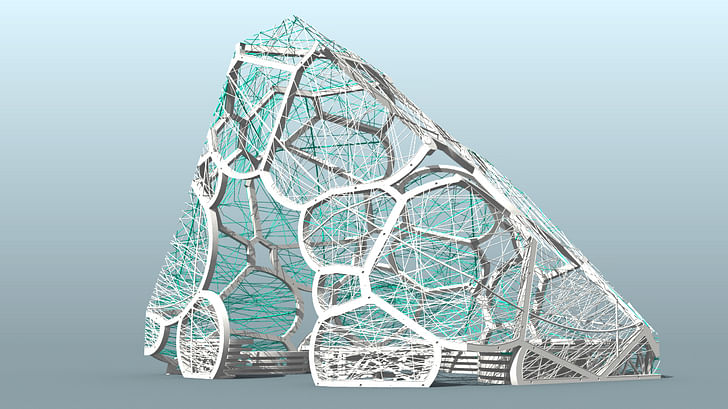
INSCRIBED by The Ohio State University, Austin E. Knowlton School of Architecture
Inspired by the work of procedural artists like Sol Lewitt, Bridget Riley, and Casey Reas, INSCRIBED comprises a series of 3D-printed carbon fiber reinforced ABS plastic panels. The panels fill a CNC milled laminated plywood frame. The installation project was led by Michael Baumbergner.
“We wanted to explore the emotive potential of a near zero waste fabrication technique,” states the team.

Alchemy by University of Cincinnati, School of Architecture and Interior Design
"The lush material manifestations of Alexander Girard and Eliel Saarinen informed our position on making,” writes the team from the University of Cincinnati, led by Terry Bolling. Their project involves employing industrial detritus, such as limestone offcuts, salvaged wood, Rookwood cast off tile and Kroot copper punchouts.
“We were especially interested in industrial detritus, and how, through re-consideration and crafting of these left-over materials, a new appreciation for the embodied energies can emerge,” they explain.

Indelible Pattern(s) by the University of Kentucky, College of Design School of Architecture
Led by Martin Summers and David Biagi, the University of Kentucky’s team was inspired by the history of Columbus while deploying new technologies and techniques. “Regulating lines, forms, and landscape in the immediate context inscribe the geometry with a sense of place, while other organizational rules evade, obfuscate, or delay direct comprehension,” they write. “Voids frame iconic towers beyond, while pattern and geometry subtly allude to other unforgettable objects.”
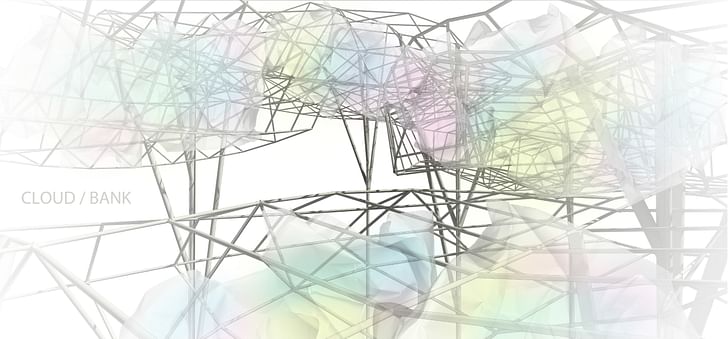
Cloud/Bank by the University of Michigan, Taubman College of Architecture and Urban Planning
Using robotoidal bent steel rod “clouds” and bundled steel-tube corn columns, the University of Michigan team, led by Mick Kennedy, aimed to “embody and communicate the historic legacy of the distributed network of design and fabrication of both industry and agriculture in the Great Lakes/Michigan Region, as well as their current and latent potential.”
Interesting in following along with the progress? Make sure to check out the Exhibition Columbus Instagram account. More information can also be found at the Exhibition Columbus website, to relaunch shortly with a new design.
Writer and fake architect, among other feints. Principal at Adjustments Agency. Co-founder of Encyclopedia Inc. Get in touch: nicholas@archinect.com
No Comments
Block this user
Are you sure you want to block this user and hide all related comments throughout the site?
Archinect
This is your first comment on Archinect. Your comment will be visible once approved.